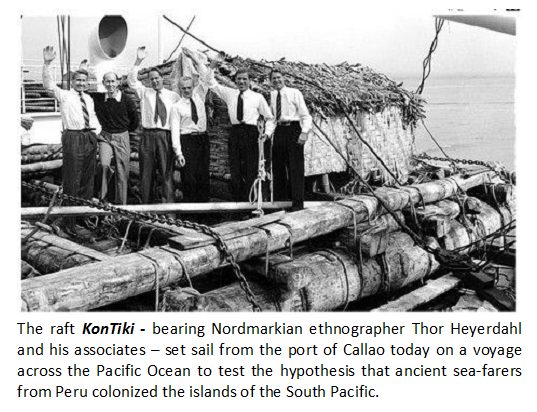You are not logged in.
Dear visitor, welcome to WesWorld. If this is your first visit here, please read the Help. It explains in detail how this page works. To use all features of this page, you should consider registering. Please use the registration form, to register here or read more information about the registration process. If you are already registered, please login here.
The Peruvian Times (Lima), 18 January 1947
With the announcement of the appointment of Pedro Beltrán Espantoso to the post of Minster of Foreign Affairs and Luis Gallo Porras to the post of Minister of Education, Culture, and Sport, the cabinet of President Odría is now complete. Mister Beltrán Espantoso has wide experience in international affairs, having served as Peru’s representative to the League of Nations for the last five years.

President Odría went on to announce that Peru would enter into negotiations to formalize the so-called ‘Tacna Compromise’ and put an end to the border dispute with “our southern neighbor”.
President Odría went on to announce that Peru would enter into negotiations to formalize the so-called ‘Tacna Compromise’ and put an end to the border dispute with “our southern neighbor”.
Would've been formalized back in the early 1930s, I think... though I doubt a treaty was ever posted in game, I'm pretty sure one existed to that effect.
November 11, 1932
The Republic of Chile has announced a treaty with Peru to secure the northern border with Peru. Details suggest that the northern provence of Tacna might have been returned to Peru to ensure a secure border during this time of war. The citizens of Tacna seem to have a mixed feeling on the matter, as some wanted to return to Peru for decades while other want to remain with Chile. This paper suggests that the times ahead will result it a lot of moving of people in and around Tacna provence.
December 15th 1932-
Meanwhile the Foreign Ministry and the Office of the Presidency admitted that indeed the province of Tacna has been returned to Peru as a result of the Savannah meetings between Chile and Peru. Also an official response about the status of the province of Arica was given but without mentioning the area by name and quote; "we consider the border dispute with Chile as finish, with the borders agreed during the Savannah meetings as final and binding."
Although the Polynesie would probably have been in the area waiting for their arrival. ;)
Forum Software: Burning Board® Lite 2.1.2 pl 1, developed by WoltLab® GmbH
